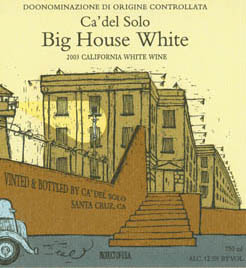 |
|
Wine Details
Price:
Description:
e continue to note that the paucity of distinctive, delicious, inexpensive white wine manifests itself in the wild success of Big House White™. Even if the label leads one to believe we throw anything and everything at the wine, there is a conscious mind at work behind its slightly formulaic conjuring which imagines something like 2 parts crisp herbal sauvignon / colombard / chenin blanc; 3 parts rich, fruitful pinot grigio / pinot blanc / viognier; and 1 part aromatic riesling / malvasia / muscat. Your blend at home may vary. Happily, there is always an element of serendipity at work. Just when you are about to give up trying to get the wine from satisfactory to utterly delicious, the perfect cuvée of vermentino or roussanne is brought into the yard restoring order to the world. Crisp and fragrant with notes of Asian pear, grapefruit and wild mountain honey, the wine, despite its melting pot constituent parts, reminds us of nothing so much as the Friulian blends which are its inspiration.
|
|
|